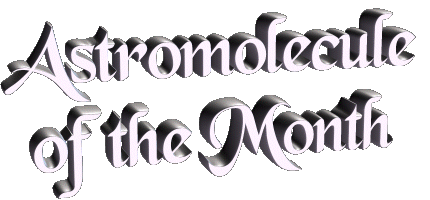|
Pyrrole, c-C4H5N, has been the subject of several unsuccessful astronomical searches
separated by more than four decades. The first searches were both reported in 1980.
Myers and coworkers sought pyrrole toward
Sgr B2, while
Kutner and coworkers sought
pyrrole toward both Sgr B2 and TMC-1.
Both searches used the
43m telescope at Green Bank,
West Virginia. After four decades passed with no other reported searches,
Barnum and coworkers made a new search for
pyrrole — and about 20 other heterocyclic
compounds — toward TMC-1 with the
100m Green Bank Telescope. Even with the
superior sensitivity of the newer telescope, pyrrole defied detection. Newer data about the rotational spectrum
of pyrrole were also available: the 1980 searches were based on 1969 lab work by
Nygaard et al.; the recent search also
used measurements by Wlodarczak et al
published in 1988.
|
|
|
|
While nitrogen atoms are often found to adopt a pyramidal bonding structure—as in
ammonia, cyanamide,
hydroxylamine, methylamine,
vinylamine, and aminoacetonitrile—
it can also be planar, as it is in pyrrole and formamide.
The pyramidal form occurs because nitrogen has three singly occupied 2p orbitals that are 90° apart; the
bond angles expand from the nominal value due to bond pair repulsion. The planar form is related to the
trigonal planar form of the CH3 radical with sp2 hybridization of the three bonds pairs.
In contrast to CH3, planar NH3 has a doubly occupied 2p orbital on nitrogen. The planar
form tends to be favored when the 2p2 lone pair can undergo delocalized π bonding with neighboring
atoms, as it does in pyrrole.
|





